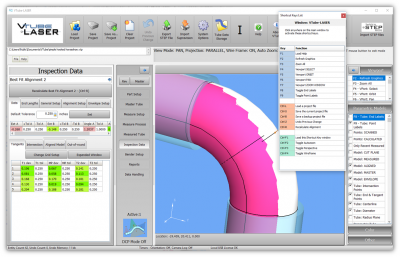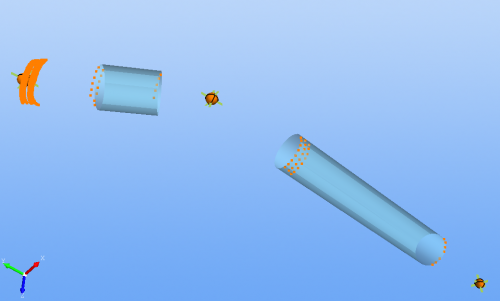Difference between revisions of "Compare UniScan to MultiScan Measurements"
(→MultiScan Measurements) |
|||
| Line 50: | Line 50: | ||
MulitScan only measures near the tangents of a straight. (The tangents are the locations on the straights where the straights and bends meet.)<br><br> | MulitScan only measures near the tangents of a straight. (The tangents are the locations on the straights where the straights and bends meet.)<br><br> | ||
MultiScan measurements are usually reserved for straights that are bowed - like in brake lines with long straights.<br><br> | MultiScan measurements are usually reserved for straights that are bowed - like in brake lines with long straights.<br><br> | ||
| − | For those kinds of tubes it is often the case that MultiScan is the only way to solve for a centerline. (UniScan would reject those kinds of straights | + | For those kinds of tubes it is often the case that MultiScan is the only way to solve for a centerline. (UniScan would reject those kinds of straights using its default tolerances.)</td> |
<td> | <td> | ||
[[image:multiscan.png|500px]] | [[image:multiscan.png|500px]] | ||
| Line 58: | Line 58: | ||
</table> | </table> | ||
<br><br> | <br><br> | ||
| − | |||
==MTA Measurements== | ==MTA Measurements== | ||
Revision as of 20:20, 28 March 2018
|
Compare UniScan and MultiScan Measurements |
Can UniScan and MultiScan Result In Different Numbers?
Yes – they can give different numbers for tube measurements. This is because UniScan and MultiScan cover different parts of the surface on the same straight. See the different sections below to understand why.
UniScan Measurements
|
UniScan measurements take one group of evenly spaced points over the entire straight. The method use to measure with UniScan is like spray painting. |
MultiScan Measurements
|
MulitScan only measures near the tangents of a straight. (The tangents are the locations on the straights where the straights and bends meet.) |
MTA Measurements
| MTA (Measured Tube Averaging), combined with UniScan measuring, is the the best type of measuring available in VTube-LASER. MTA allows you to measure multiple sides of the same tube, then average the results into a single final tube shape. |
Other Pages
- Back to VTube-LASER




